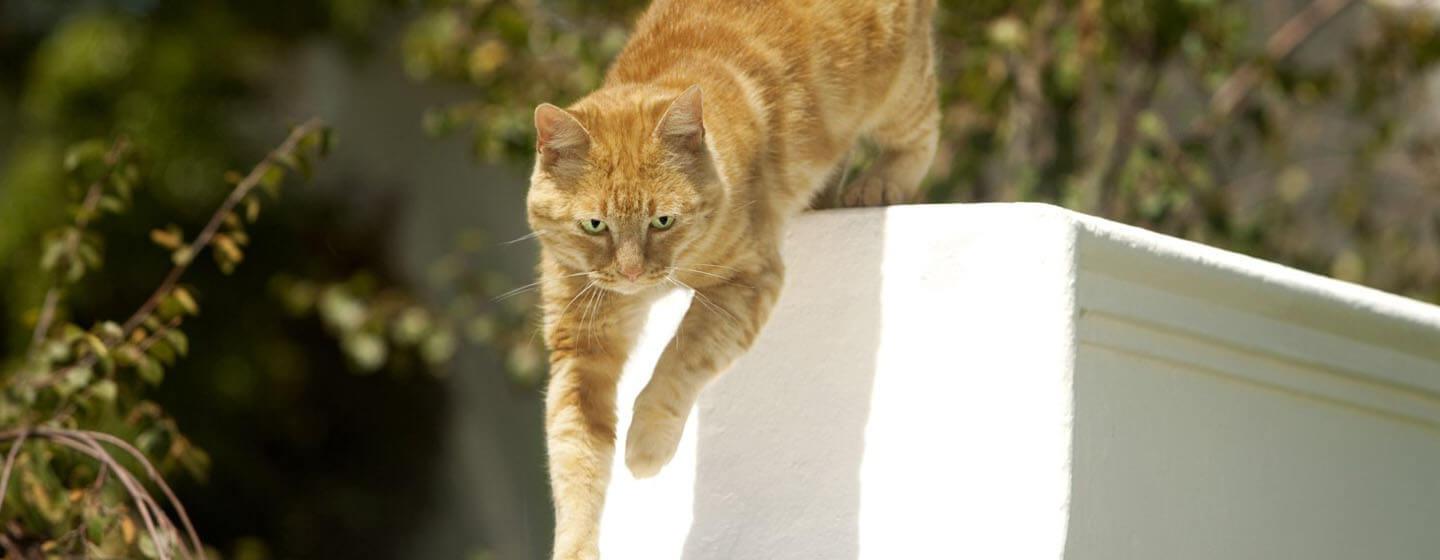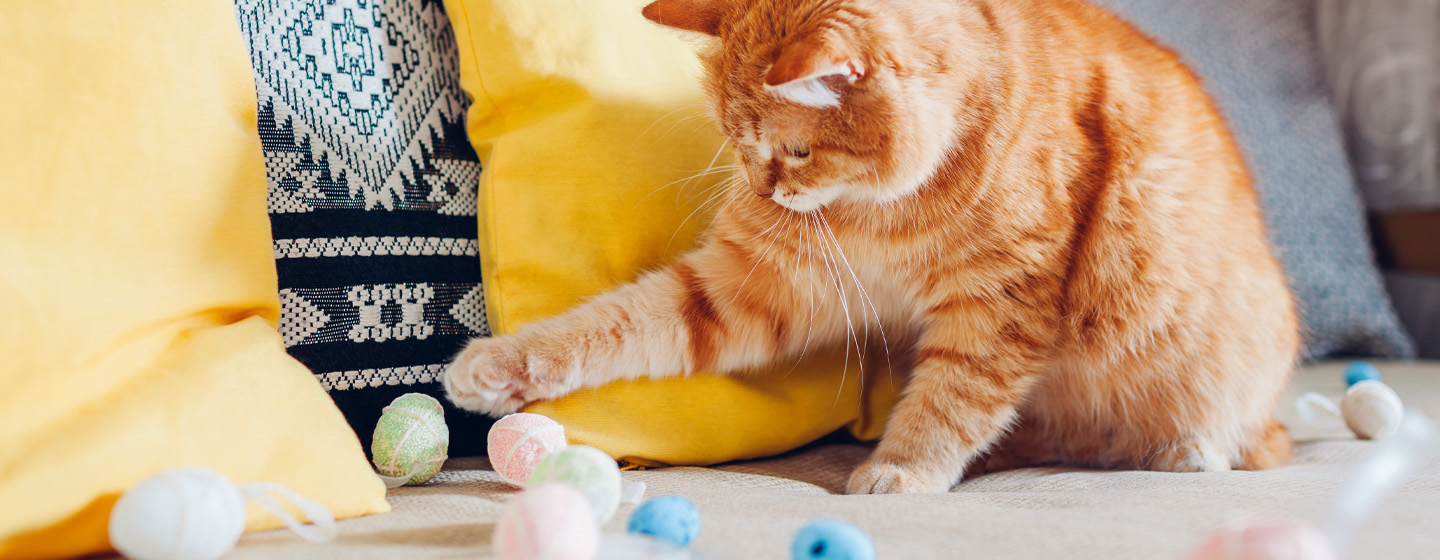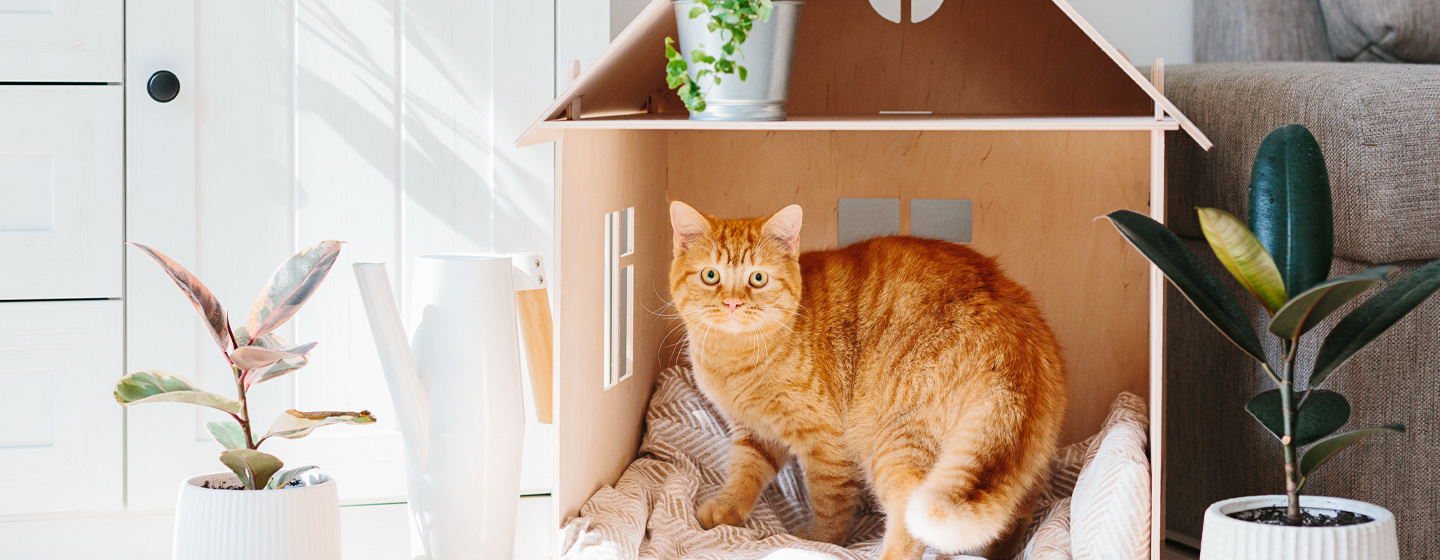To encourage indoor cats to be active, owners can employ various strategies that engage their natural instincts and preferences. This includes using enticing toys such as laser pointers and battery-operated devices, introducing outdoor walks with a leash, and utilizing digital cat apps. Teaching cats tricks can also enhance their skills while strengthening the human-animal bond. Creating vertical spaces for climbing, timing play sessions effectively, rewarding play with treats, and potentially arranging play dates with other cats can further motivate activity. Importantly, regular interactive playtime with the owner is crucial, as cats thrive on companionship and positive social interactions, ensuring they remain healthy and stimulated throughout their lives.

10 ways to encourage cat exercise
Find out how to encourage your cat to be active, even if they live indoors.
Getting your beautiful cat to exercise can sometimes be a challenge. As any cat lover knows, cats have strong and independent personalities; they need alone time and are unlikely to do anything they don’t want to do. This can be especially worrying for a house cat, who has no outdoor exercise to help keep her healthy, or a kitten who has to be kept in the house for the first six months of their life. So how do you make your cat exercise?
Enticement is the way forward: cats need to be engaged with their task or they can rapidly lose interest. Luckily, they all have a few personality traits that you can tickle to ensure they are having the time of their lives-and are being active in the process.
1. Laser pointers
Different cats have different preferences for the toys they like. Some are in love with the fishing pole, where you dangle a string above their heads and they bat at it. Others adore paper bags and boxes. But if your cat seems disinclined to play, then it is best to appeal to her feral nature-pouncing. Cats love to chase, especially items that move quickly. The laser point is an absolute favourite: point a laser at the wall and watch your cat try and catch that elusive red dot.
2. Battery-operated toys
These are another great way to make your cat exercise, and are ideal solutions for busy owners. Just turn on a battery-operated toy, available from most pet shops or online, and your cat will be entertained for hours!
3. Outdoors
While it may seem unusual, house cats can be encouraged to go outdoors and be walked. It is, of course, necessary to see if your cat is happy with this-don't do anything that might stress or upset her. If you plan on this form of cat exercise, try and introduce it when they are kittens (after the first six months!) when they seem more inclined to try new things. Older cats may be set in their ways and may take more convincing. Remember to use a leash when walking them, and make sure it fits comfortably.
4. Cat apps
Cat apps are a wonderful way for your pet to participate in the digital world and have fun while doing so. Created for both iOS and Android systems and for tablets and desktops, such apps allow your cat to play with multiple worlds all in the comfort of your home. A tablet is best for such games, as it can be placed on the floor, but be careful that your cat doesn't try and bite it while playing.
5. Cat tricks
This may seem challenging but it is also very rewarding. Teaching your cat tricks can improve your bond, as well as help them develop their skills through exercise. Start with something small, like training them to sit or give you kisses.
Then you can then work your way up, like teaching them to rise on their hind legs or jump through hoops. They are graceful, quick and agile-given time, there is very little your cat cannot do.
6. Vertical tower/space
Vertical space is important for your cat. Arrange one room in the house to have lots of vertical space-tables close to chairs and counters. This encourages your cat to leap from one to another, an instinctive form of exercise. A toy that can impart this same sense of elevated joy is the vertical tower. This has different levels that let your cat jump, climb and rest-their very own personal tree.
7. Timing
How do you make your cat exercise when they're always curled up somewhere? Remember, it is natural for cats to sleep a lot. Try and get them to exercise at a time of day that suits them, such as right after a nap or before food. Judge it carefully. Eating a meal would naturally make them sleepy, and they would not be in the mood to play. Do not worry about the length of the play sessions as well; these are likely to be short. Fifteen minutes is the average length of one play session. Try and schedule around two to three a day.
8. Kibble
Everyone loves rewards. Give your cat some Go-Cat® kibble when she comes to play with you or when she is learning a new trick. It will make sure she comes back!
9. Play date
This is a tricky form of cat exercise, but remember that cats can be social. If arranging a play date, ensure the cats have time to get to know each other, preferably through a screen door or some sort of barrier. Choose a neutral place, as cats are territorial. If they hit it off, they can have wonderful time inventing their own fun.
10. Your company
There is nothing that entices a cat more than interactive play. Take time to bond with your adorable pet-you are, after all, their favourite human. If you have a housebound kitten, this type of play can help them recognise you and create a beautiful relationship. Make sure you set good boundaries. Do not let your kitten play with your hands and skin, as this can develop into scratching and biting later in life.
Remember, a cat's play habits change throughout her life. While kittens have boundless energy and are more open to learning, it is usual for cats to play less after they are five months old. Above all, they should be healthy, well fed and happy.

